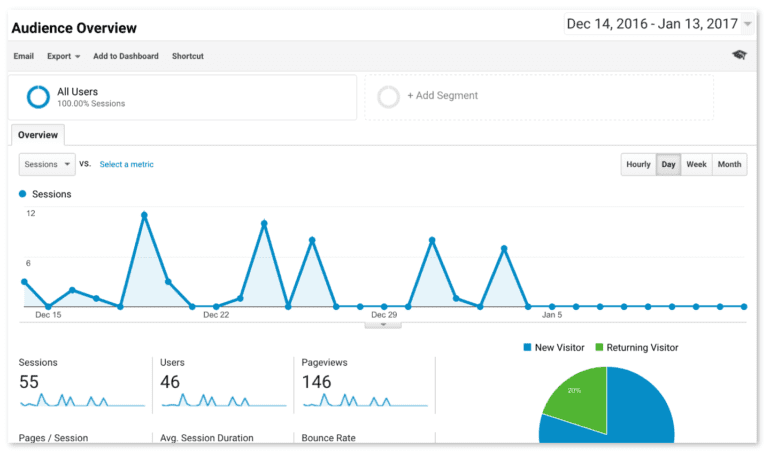Reasons Why Ecommerce Sites Fail
Presenting an article by John Stevens, a web hosting expert on hosting companies from around the world. John tells you about why your ecommerce business can fail.
 |
John is a web hosting expert on different hosting companies from around the world. He loves to code websites, make them visually appealing as well as improving them UX wise. |
Nowadays, it’s fairly easy to start an online store—all you have to do is get a domain name, set up your website’s hosting, look for an ecommerce platform to suit your needs, and voila! You now have your very own store online!
No need to set up anything as it is all done virtually; however, running your own ecommerce store is the real challenge. Entrepreneurs online are enthusiastic with owning an online shop, but little do they know that there are many factors to consider in keeping their ecommerce shop running. Managing an ecommerce store is no joke. Did you know that 8 out of 10 ecommerce sites fail within the first 24 months? You don’t want to waste your investment, do you? failed ecommerce companies
Why Do Merchants Fail with their Online Store?
There are several factors why ecommerce stores fail. As a website and an ecommerce store owner, you should be aware of these following pitfalls:
Bad Website
Your online store is the face of your business. A badly designed website reflects on your business. You should adopt a modern-looking website to triumph over other ecommerce sites. Once you’ve adapted a better-looking website, you should consider improving your website’s speed performance.
Website security is another factor that you should take seriously. An unsecured website will drive away your customers, and it all comes down with your choice of ecommerce platform.
To cut costs, small business owners opt for free ecommerce platforms without considering how this can affect their future operations at hand. Free ecommerce platforms have limited capabilities that may compromise your business.
Meanwhile, premium shopping cart software like CS-Cart can handle everything in managing your online store. From design, store management, products, payments and shipments, marketing, performance, and more importantly, security—they got you all covered.
Lastly, you should invest in a niche where you can stand against your competitors. There’s the slightest chance that you can beat ecommerce giants like Amazon, Newegg, or Best Buy, but with the right product and marketing strategy, eventually, you’ll get your own customers.
Poor Website Traffic

Don’t blame the lack of interest in your products as the primary reason why your website has fewer traffic and high bounce rates. There are several implications to this problem:
-
- Poor website performance in terms of speed—learn how to stress test your website and see if it can handle surges of traffic.
-
- Wrong target market—are you selling your products to the right customer?
- Unappealing website design and content.
However, there are two ways on how to address the lack of quantity and quality of website traffic going to your site. You can run paid campaigns like Google AdWords, or you can invest in content to garner organic traffic.
PPC marketing tools like AdWords are an immediate solution, but in the long run, content is the primary tool that you need to get in quality traffic. AdWords can be costly especially if mismanaged, and poorly planned content marketing can also burn your budget. What can you do? Start slowly—you can start blogging first before venturing into paid campaigns. You can use this how-to guide on starting a blog or refer to the previous post on why your online store needs a blog. The infographic on that post has more information on the history of blogging, its benefits, the best platforms and how to get them up and running.
Passion—Managing and Investing
We know that revenue is important, but how motivated are you to push through with this business venture? Are you prepared to push through with your online store? It’s a long wait to reach ROI! Are you opening an online store because your friend complimented your t-shirt designs? You shouldn’t rush opening an online store if you’re not that passionate about managing and investing money and time in this business. Aside from managing your online store, you may need to regulate cash-flow problems or watch out on expenses. Owning an ecommerce store is a big responsibility.
Product Management: Online and Offline

Your product is your main feature. Did you know that your product’s images make or break your chance at converting? Online shoppers rely on images to give them the idea of what a product looks like. Poor images will just discourage the buyer from purchasing the item on your site. Betsy Emery, CEO of an award-winning web design firm, says “consistency and quality of product images directly impact conversion rate.”
Offline, how you manage your inventory is crucial—you can never have too much or too little. Poor inventory management can be costly for your business. If you don’t control your inventory well, you’ll never have a true gauge on how your business is doing.
Lack of Patience
Again, having an ecommerce store does not guarantee immediate revenue. It’s not your instant cash machine. It will take some time to get a decent ROI out of it, but with great effort comes great returns. Be patient enough but be vigilant when it comes to your internal process. Invest time in checking your site’s performance, handling your inventory, and overseeing your marketing efforts.
Images from Burst, Neil Patel, Search Engine Land.
Want to get updates from our blog first? Follow us on Facebook and Twitter then.
Yan Anderson is the Head of Content Marketing at CS-Cart with over 10 years of experience in the eCommerce industry. He's passionate about explaining complicated things in simple terms. Yan has expertise in building, running and growing eCommerce marketplaces. He loves to educate people about best practices, new technologies, and trends in the global eCommerce industry.

